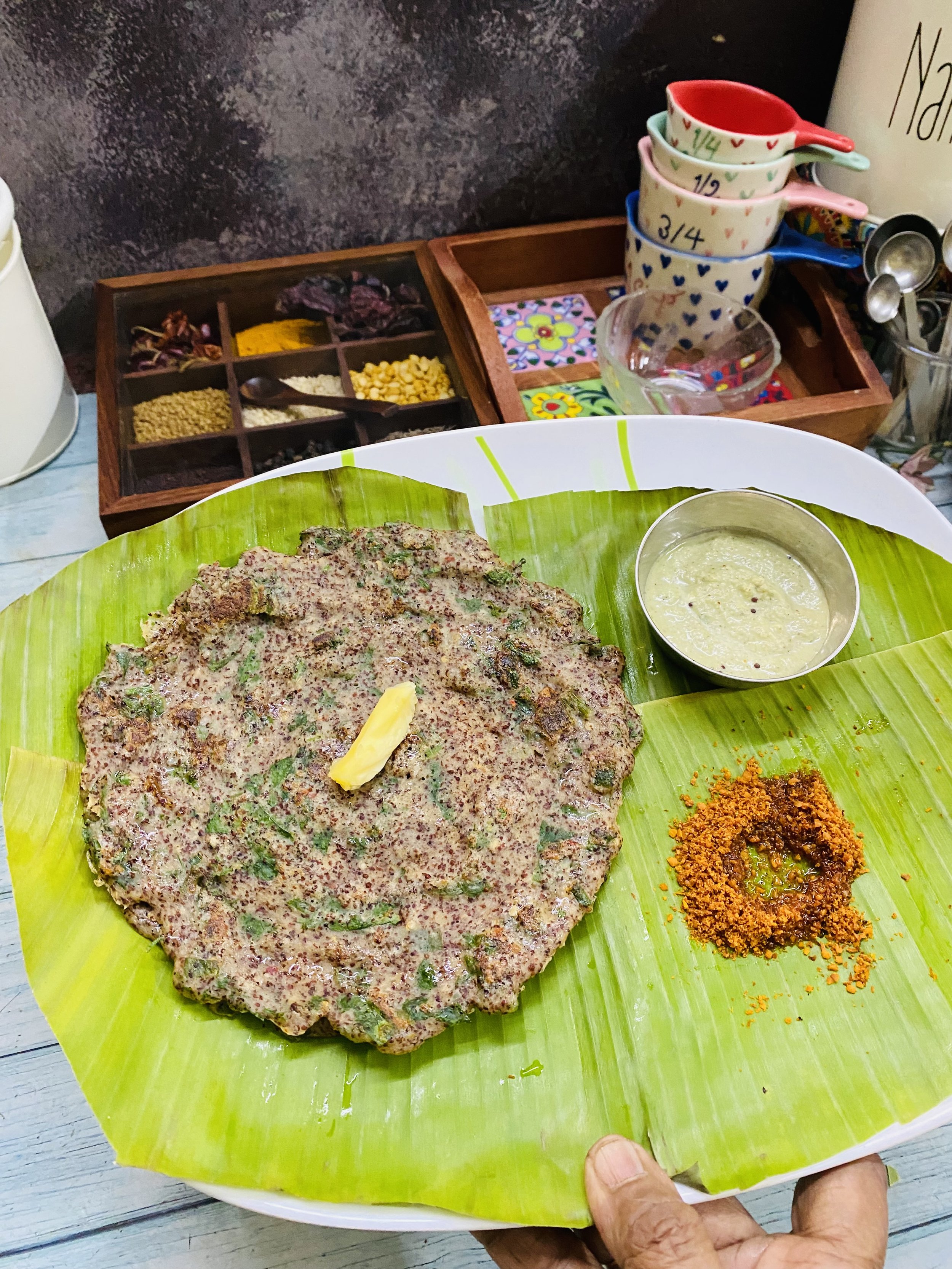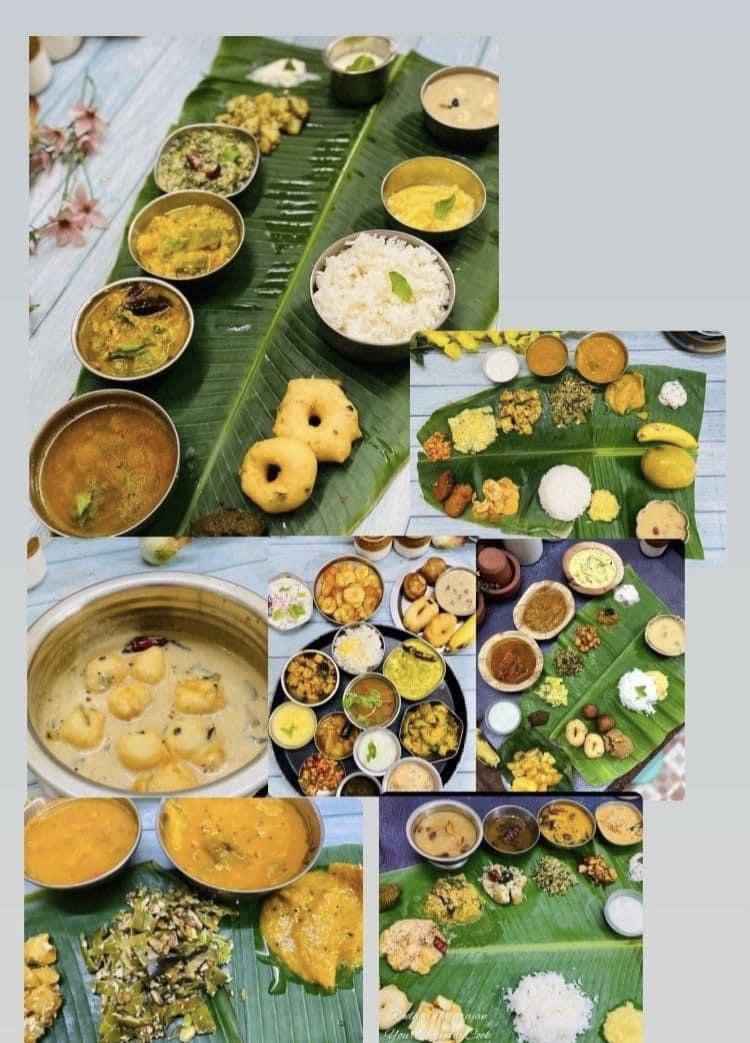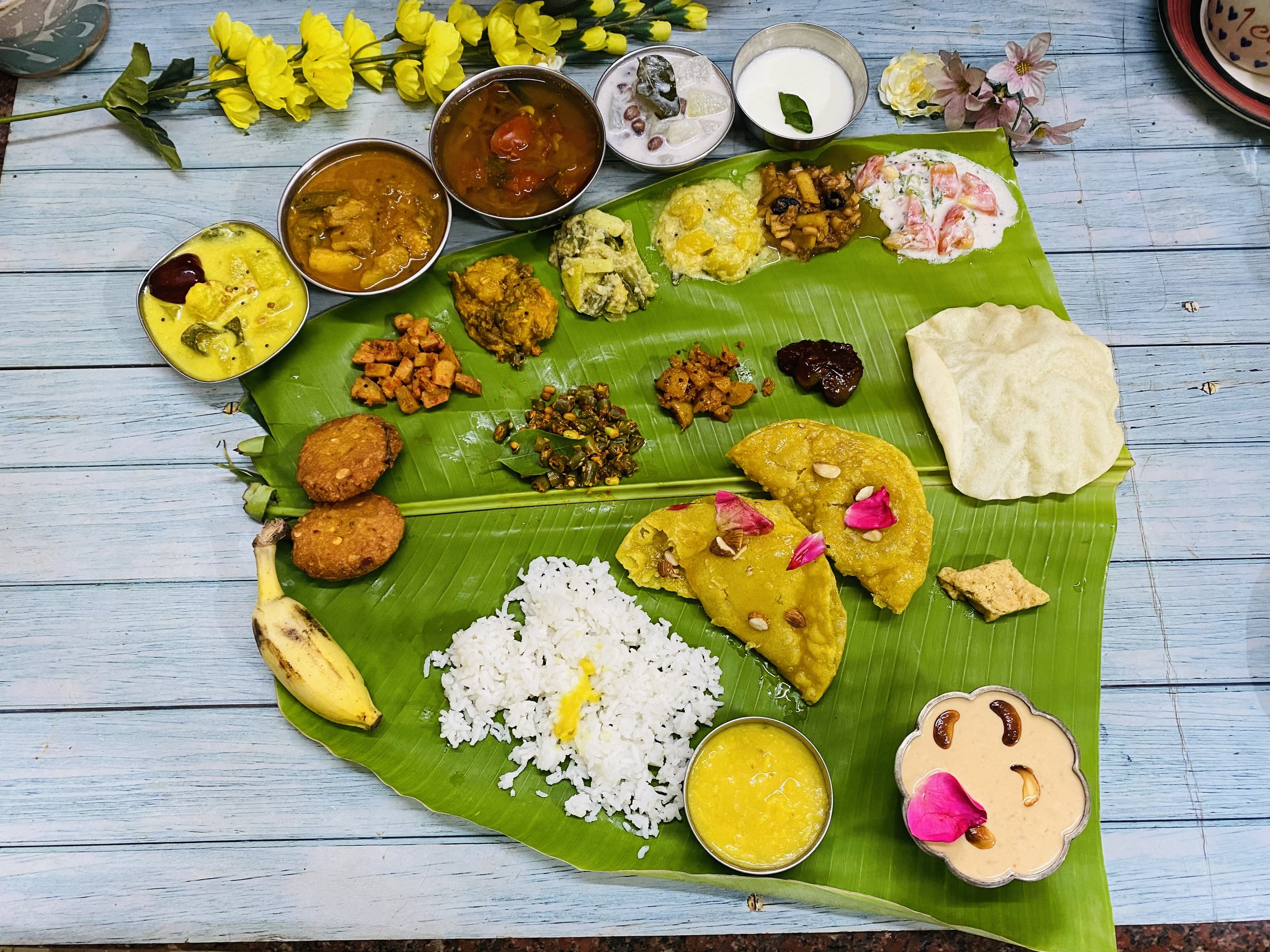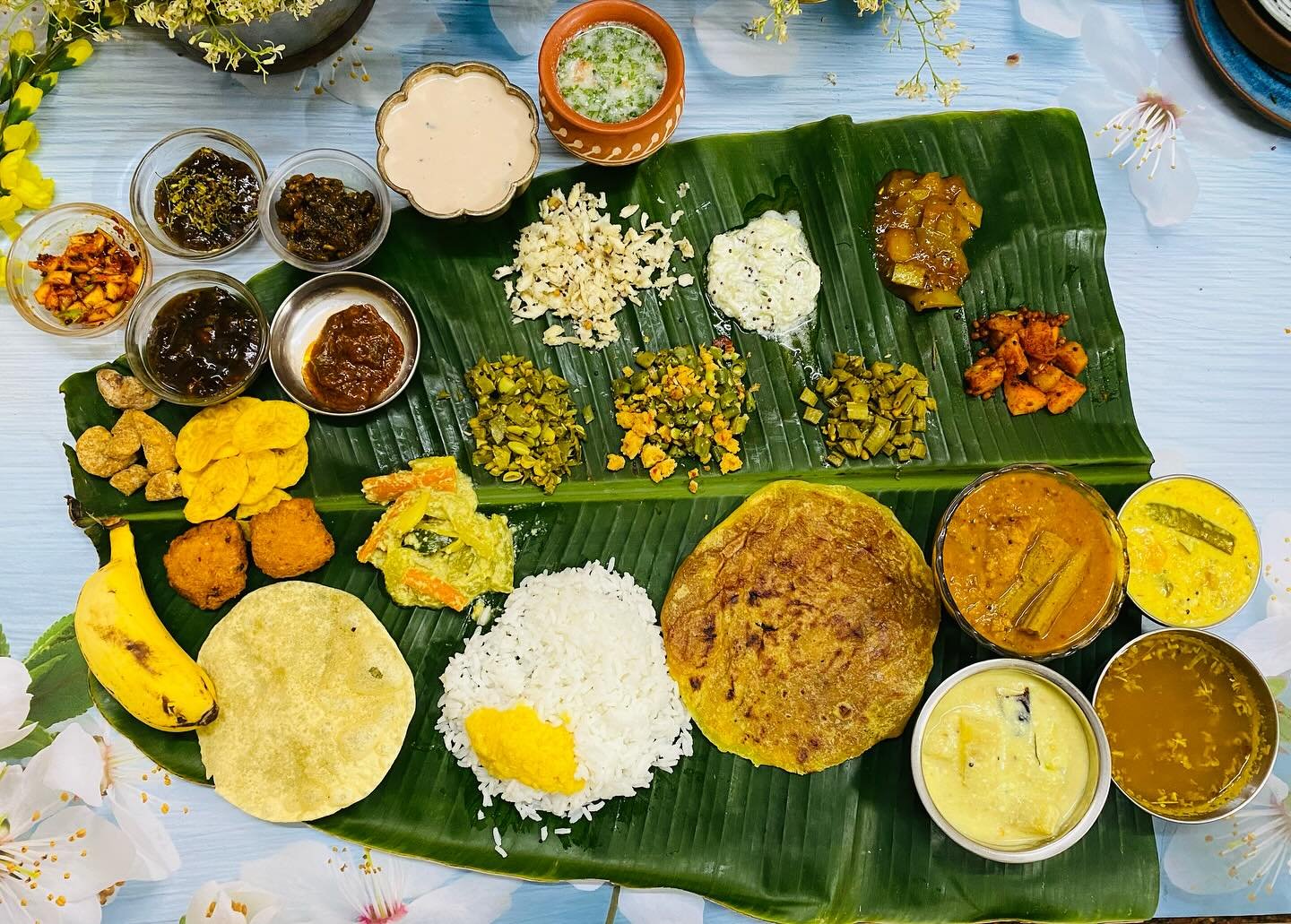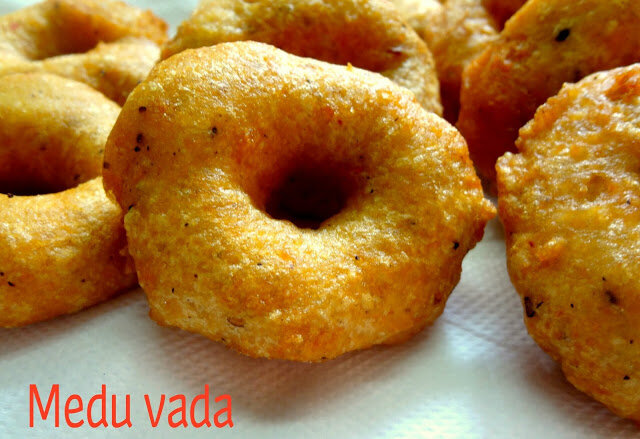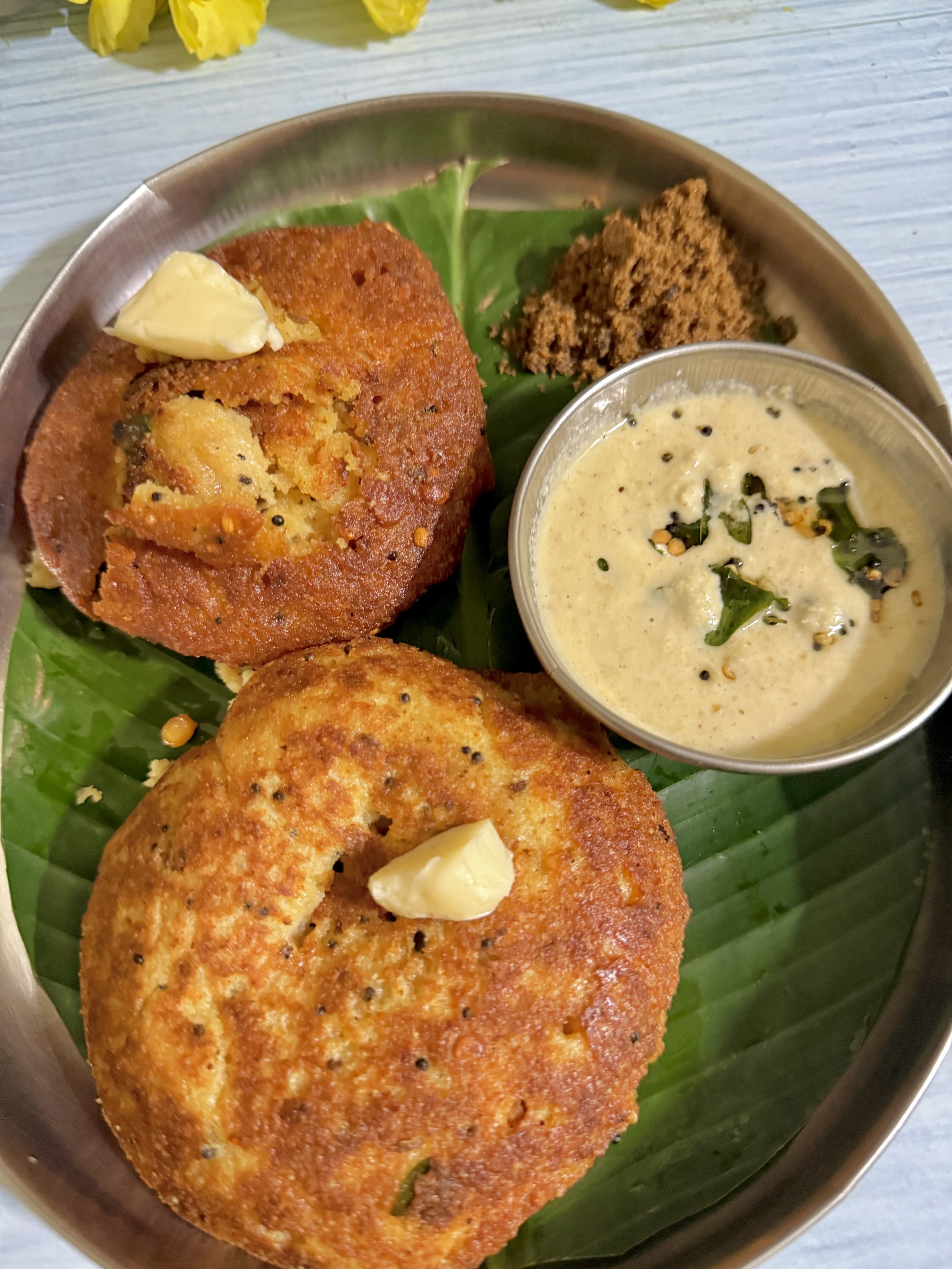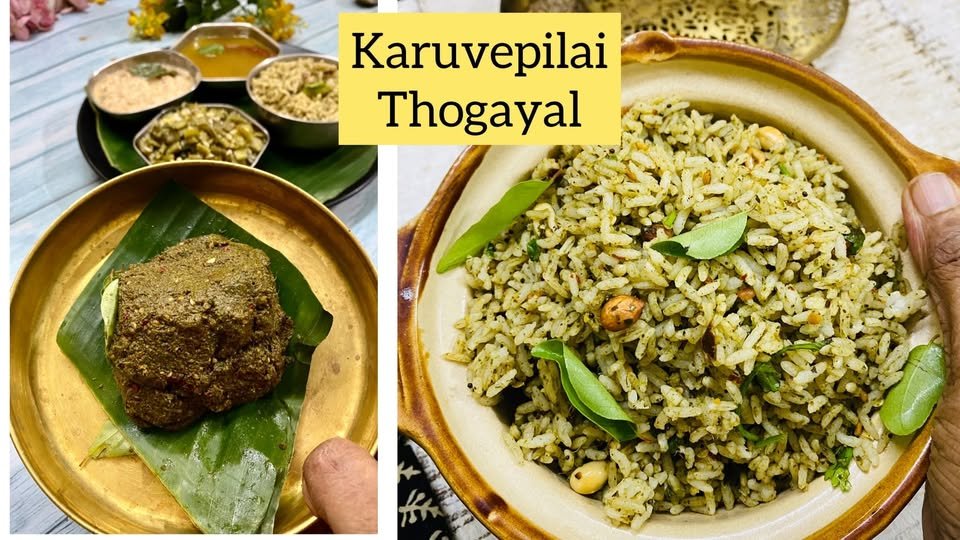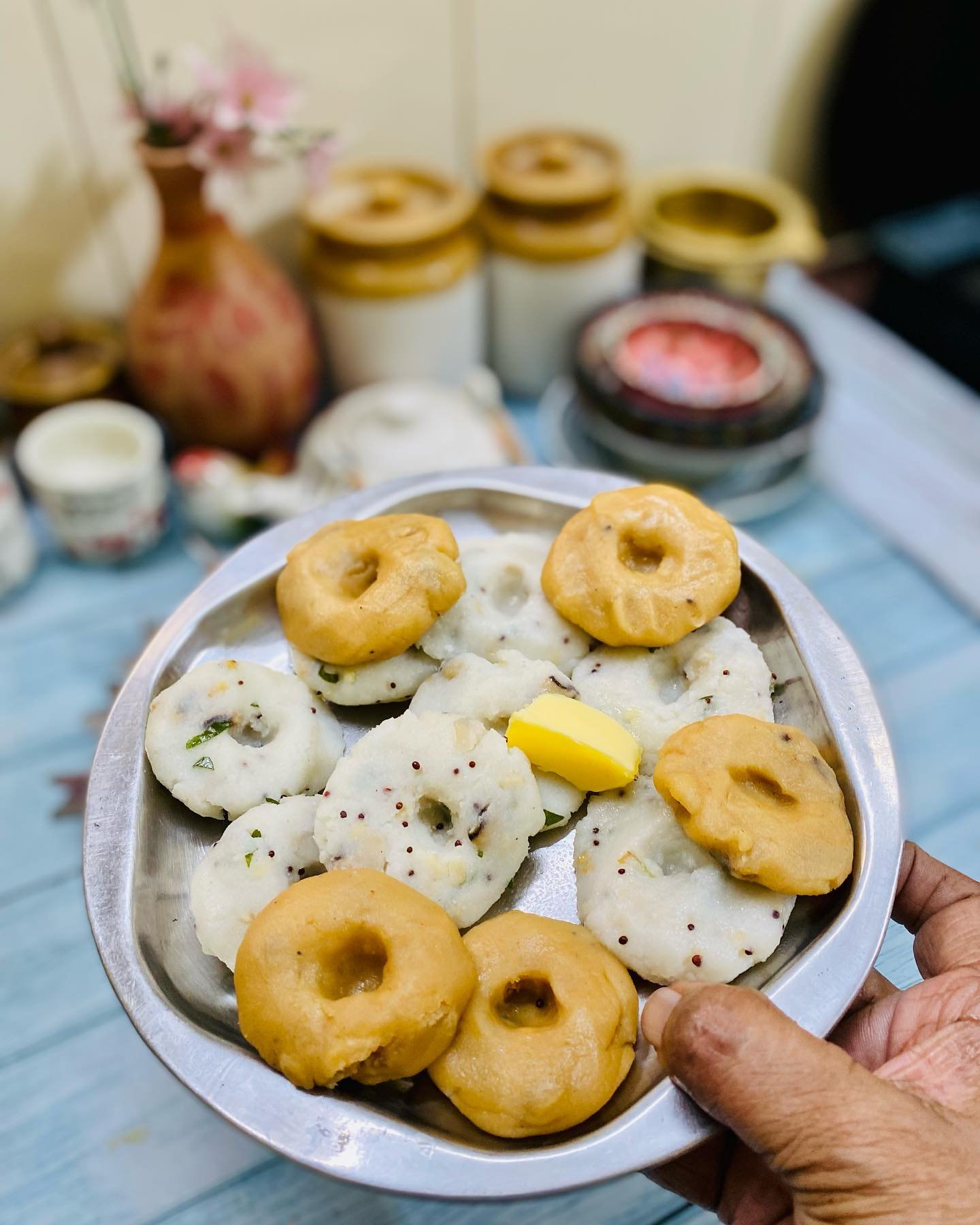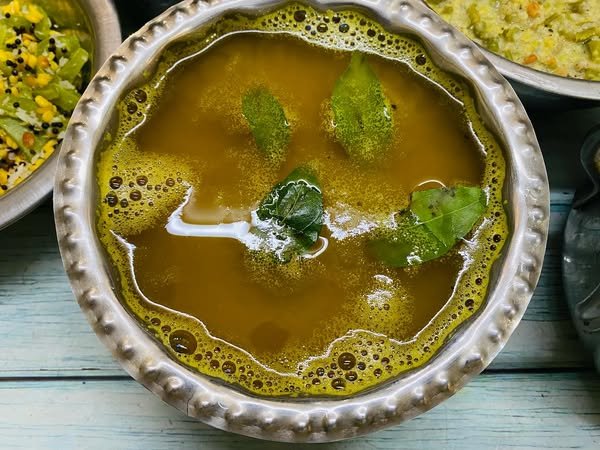Adai
Adai
Adai
Adai is a nutritious, dense South Indian pancake made from a mixture of lentils and rice. It’s a popular dish in Tamil Nadu and Kerala, known for its protein-packed ingredients and versatility. Unlike the more common dosa, adai is thicker, coarser, and contains a rich mix of dal varieties, making it a highly nutritious meal option.
Enhance the nutritional richness of Adai with a blend of quinoa, chana dal, oats grits, moong dal, rice, and Ragi. The batter is enriched with manathakkali keerai (spinach variety) and a touch of spring onion greens for a delightful aroma.
Customize your Adai by including greens like moringa, methi, palak, minced onions, dill leaves, grated coconut, or chopped coriander leaves—the possibilities are diverse.
Achieve a crispy texture by cooking these Adai on a heavy iron skillet. Infuse an appetizing aroma using coconut oil.
Bonus : this batter gets better next day after resting in the refrigerator. You can make excellent paper thin dosas . Check out the pics below . 👇 at the end of the recioe .
Ingredients:
3/4 cup Quinoa
3/4 cup Ragi
3/4 cup Chana dal
3/4 cup mix of Steel cut oats, rice, sabudana (optional, use leftover mix if available)
5-8 red chilies
Soak the ingredients for 4-5 hours with red chilies, then grind to a slightly coarse paste.
Add salt, asafoetida powder, and shredded greens of your choice (e.g., spring onion greens, manathakkali keerai, coriander leaves). Mix well.
Instructions:
Heat a tava and spread the batter to your desired thickness.
Use coconut oil for cooking, achieving a crispy texture by flipping and cooking both sides.
Serve with your preferred accompaniments.
Enjoy this nutritious and flavorful Adai with the goodness of diverse ingredients!
More about Adai
1. High Protein Content
Lentils such as toor dal (pigeon peas), chana dal (split chickpeas), urad dal (black gram), and moong dal (green gram) are excellent protein sources, essential for muscle building and repair. A single serving of adai can offer a significant portion of the daily recommended protein intake.
2. Dietary Fiber
The lentils and rice in adai provide dietary fiber, which is beneficial for digestive health, helps in regulating blood sugar levels, and contributes to a feeling of fullness, aiding in weight management.
3. Complex Carbohydrates
Rice and lentils contain complex carbohydrates, which are a vital source of energy for the body. They ensure a slow and steady release of glucose into the bloodstream, keeping energy levels stable.
4. Vitamins and Minerals
Lentils are a good source of B vitamins, especially folate, which supports neurological health and is crucial for pregnant women. They also provide minerals like iron, magnesium, potassium, and zinc. Iron helps in combating fatigue and anemia, magnesium supports muscle and nerve function, potassium is essential for blood pressure regulation, and zinc boosts the immune system.
5. Low in Fat
Adai is relatively low in fat, especially when minimal oil is used for cooking. This makes it a heart-healthy option that can fit into a balanced diet.
6. Antioxidants
The lentils in adai contain antioxidants, which fight against oxidative stress and reduce inflammation in the body, contributing to overall health and preventing chronic diseases.
Nutritional Estimate per Serving (Approximately)
Calories: 200-250 kcal
Protein: 8-10 g
Carbohydrates: 30-40 g
Fiber: 5-8 g
Fat: 2-4 g
Iron, Magnesium, Potassium, Zinc: Variable amounts depending on the specific lentils and their proportions
Conclusion
Adai is a well-rounded, nutritious meal that can be enjoyed at any time of the day. It’s especially beneficial for vegetarians and vegans looking for high-protein meal options. Serving it with accompaniments like avial (mixed vegetables in coconut gravy), jaggery, or homemade chutneys can enhance its nutritional profile and taste.
adai dosa
adai dosa
adai dosa


